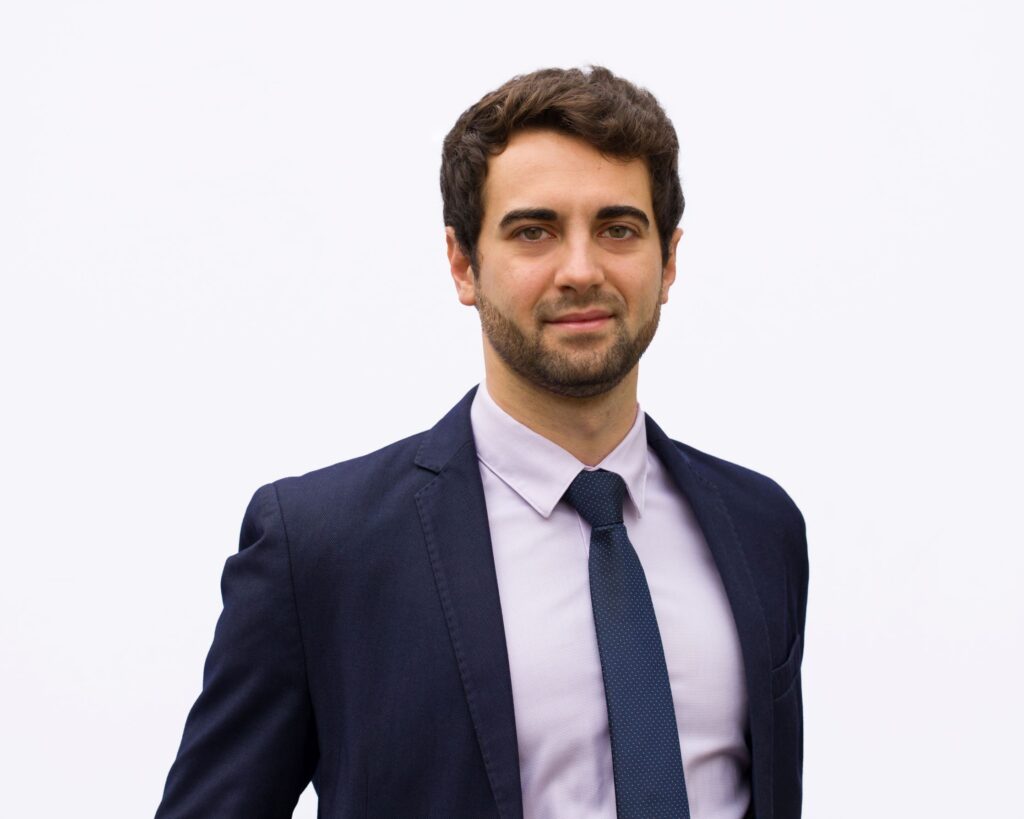Over the last 12-18 months, environmental, social and governance (ESG) investing has reached a tipping point and moved from a hot new trend to a mainstream investing choice, with multi-asset opportunities in the equities, fixed income and derivatives worlds. In this article,representatives from Quintet Private Bank, Blackrock, ESG Portfolio Management and Eurex explore recent trends, including the role the nascent ESG derivatives market will play as the market matures.
An overview of ESG trends
Sustainable funds outperformed their conventional fund peers in 2019, with the returns of 35% of sustainable funds placing in the top quartile of their respective categories, and nearly two thirds ranking in the top two quartiles, according to Morningstar. Thanks to their focus on technology-related stocks and shunning of energy-related companies, mutual funds prioritising ESG criteria have outperformed the broader market during the Covid-19 pandemic, according to S&P Global Intelligence. And sovereign wealth funds (SWFs) are increasingly turning to sustainable investing, with 83% of SWFs now believing climate change requires immediate action, according to a study by Invesco.
ESG strategies take different forms. In some cases, the investor provides the asset manager with a list of assets to be excluded from the portfolio or core index they want to invest in. Other investors seek best-in-class assets and look for companies that are better integrated in terms of ESG. Some investors look to invest in portfolios built around a particular theme, such as renewable energy, while others focus on impact and look not only for a return-and-risk outcome but an operational outcome as well, such as how well they contribute to the UN Sustainable Development Goals (SDGs).
ESG investment in fixed income has lagged that of equities but green bond issuance and demand is at record levels – the German government’s issuance of €6.5 billion was more than five times oversubscribed. The European Union is actively working to promote more green investing on the continent as countries work towards their Paris Climate Accord goals, and the European Union’s €750 billion Covid Recovery fund announced in July 2020 is set to be partially financed by €225 billion in green bonds.
Derivatives play a key role in this rapidly evolving trend towards sustainable finance. In an article last year, the International Swaps and Derivatives Association’s(ISDA) CEO, Scott O’Maliahighlighted how derivatives can support market participants in the hedging of their exposures but also the role derivatives plays in ‘facilitating price discovery and fostering greater market transparency.”
The recent boom in sustainable investing reflects growing demand from consumers for more environmentally conscious energy sources, vehicles and food products, coupled with weak performance from the energy sector amid low oil prices and the ongoing pandemic. Regulators in the EU and the UK have also turned their attention to sustainability taxonomy and a wave of regulation is coming to the financial industry relating to sustainability definitions, measurement and disclosures. In a 180-degree turn from his predecessor, the new US President Biden has also pledged to support the development of an ESG market in the US.
Sustainable investing:From values alignment to impact

James Purcell, Group Head of ESG, Sustainable, and Impact Investing atQuintet Private Bank
Investors view sustainable investing in a more positive light than before, and the focus is shifting from risks to opportunities. It is becoming less about identifying governance or accounting risks, or stranded assets, or environmental costs that are off balance sheet. These all still exist, but people are beginning to think less about how ESG protects their portfolio, and more about how it can enhance their portfolio.
However, the ESG boom is not all plain sailing. There is increasing conflict within the sustainable investing industry as different views emerge on how to transition to a more equitable and low carbon world. Debate in the marketplace can be a good thing, because it can lead to progress. But it can also impede progress if it descends into infighting.
Data standardisation and unclear overlapping terminology remain a major challenge in this space. A lack of standardisation in the industry around how to describe and measure sustainability can lead to confusion and concerns around “greenwashing”. Investors need to have confidence that companies are reporting sustainability data in a common way to be able to compare firms fairly.
The proliferation of new terminology and acronyms to describe sustainable investing can be a barrier for new entrants to the market. From ESG to socially responsible investing (SRI), impact investing (II), corporate social responsibility (CSR) and so on, it can be hard for investors to understand the different jargon and this can be off-putting to investors who are not ESG experts.
An important next step for the industry will be to look beyond simple alignment with investor values to determine the actual impact of investments and to what extent they are driving positive change in the real world. An investment may be aligned with very good environmental or social objectives, but it doesn’t necessarily in itself cause change. One thing the industry really needs to focus on, is drawing that line between whether something simply aligns with investor values or whether it has an actual impact and causes real world change.
Standardisation is needed to meet EU taxonomy requirements and limit greenwashing

Christoph Klein, Managing Partner and Founder at ESG Portfolio Management
A boutique asset manager, ESG Portfolio Management is a sustainable investment fund focused on building momentum through financial investment for progress towards the UN’s 17 Sustainable Development Goals (SDGs).
Some of the UN’s Sustainable Development Goals are easier to address through financial investment than others. For example, it is easier to focus on the environmental goals by excluding coal mining companies or selecting industrial firms which are sector leaders in transitioning into less GHG emitting technologies, rather than to focus on social goals such as education, where institutions tend to be private and goals such as nutrition or gender equality are harder to measure because of a lack of standard metrics.
This is reflected in the EU taxonomy guidelines, which focusses at this stage most of their 600 pages on climate and the environment, with a social dimension of not doing significant harm added in almost as an afterthought.
A major problem for the social goals in particular is that firms are using their own data and creating their own metrics to show how well they address the SDGs. Standardisation of the parameters being used will enable investors and managers to compare apples to apples and make better decisions as to which investments truly address the SDGs as opposed to just saying they do. Greater transparency through the new taxonomy will also enable investment managers to see the degreeto which firms they invest in adhere to climate goals and ESG ideals, so they can really select the best in class for ESG alignment.
ESG Portfolio Management contributed a case study to a recent Principles for Responsible Investment (PRI) report examining various investment case studies. Questions asked included: “What’s the commitment of the company to improve? What is the capital and operational expenditure? What kind of segments of the companies are most exposed to climate risk? And then who is involved, who is responsible, what can they do about it?” The report published 40 global case studies for asset managers to see how other firms handle these questions.
Asset managers have to write their taxonomy alignment for at least all of the companies they invest in and everyone is using different data and methodologies. The EU should create a thinktank to collect the necessary data from companies and calculate the ESG alignment and percentages in a standard and reliable way.
Demand rises for ESG derivatives

Andre Bertolotti, CFA, is a Head of Sustainable Portfolio Strategies with BlackRock Multi Asset Strategies and Solutions
Growing numbers of investors are now leaning into ESG equity indices as their main risk return targets. However, asset managers are often lacking the means to equitise the cash portion of an equity portfolio without giving exposure back to holdings inthe original core index.
An ESG index strategy in the US might offer broad market exposure, but the futures contract used to equitise the cash position in the portfolio would be an S&P 500 E-mini contract, which is composed of holdings that might include tobacco, coal or other holdings the client asked the manager to exclude. In a holistic ESG solution, the futures component needs to be aligned with the client’s ESG mandate as well.
Until recently, true ESG futures have often been harder to find, less liquid and more costly than regular index futures. With few providers thus far offering ESG-compliant futures, investor awareness is still developing as a better understanding of trading liquidity, type of ESG exposure offered and trading cost is formed.
Configuring an ESG index futures product involves additional steps compared with its core version, including removing companies involved in controversial activities and applying an ESG scoring methodology. Additionally, the management of ESG futures needsto ensure the instruments included in the ESG index comply with the ESG mandate on an ongoing basis.
There is strong interest in listed ESG futures, and asset managers are familiar with the ESG index and the exposure it gives them. They are looking for liquidity to build, which can be slow at first for new products without historical trading volumes upon which to make a forecast. And they are looking for more price transparency from the exchanges and the brokerage community so they can decide whether the instrument will work for them. Futures are filling a need but there is caution at the moment as liquidity and momentum begin to build.
Innovation in ESG derivatives

Davide Masi, Fixed Income ETD Product Design at Eurex
Eurex added a new European benchmark to its offering with futures and options on the EURO STOXX 50 ESG index in November 2020, as well as derivatives on the DAX 50 ESG Index to cover the German market for the first time.
Additionally, for a year now we have been researching how ESG principles have been adopted in fixed income investing, and what benefits a listed solution in this space could offer to clients. In our research, we identified the need of investors for a complementary listed solution to trading credit via total return swaps or credit default swaps on single name instruments or indices, but that at the same time incorporates an ESG strategy. In this regard, we are working on a listed derivative product, which would position itself in the mid-way of credit OTC traded solutions and fixed income ETFs. This is the best way for us to make the credit space more efficient, and to provide another entry point to this market via an ESG-friendly solution.
Eurex aims not only to spark more interest around the adoption of ESG strategies, but also to better facilitate the channeling of financing into green and environmental projects, as well as social projects. While these products will be complementary to existing OTC offerings, listed derivatives will help provide more transparency and standardisation around these markets, which clearly is needed in order to scale up the use of ESG strategies.
In regard to regulation, it will be interesting to see whether derivatives will play a role in the non-financial reporting directive and in the Sustainable Finance Disclosure Regulation. The adoption of ESG derivatives is still at an early stage and it is difficult to ascertain the benefits of their usage from a regulatory standpoint. However, regulation is fast evolving in this space, especially in Europe, and eventually public institutions will come to recognize the value that derivatives linked to ESG strategies can deliver to the investment community.

